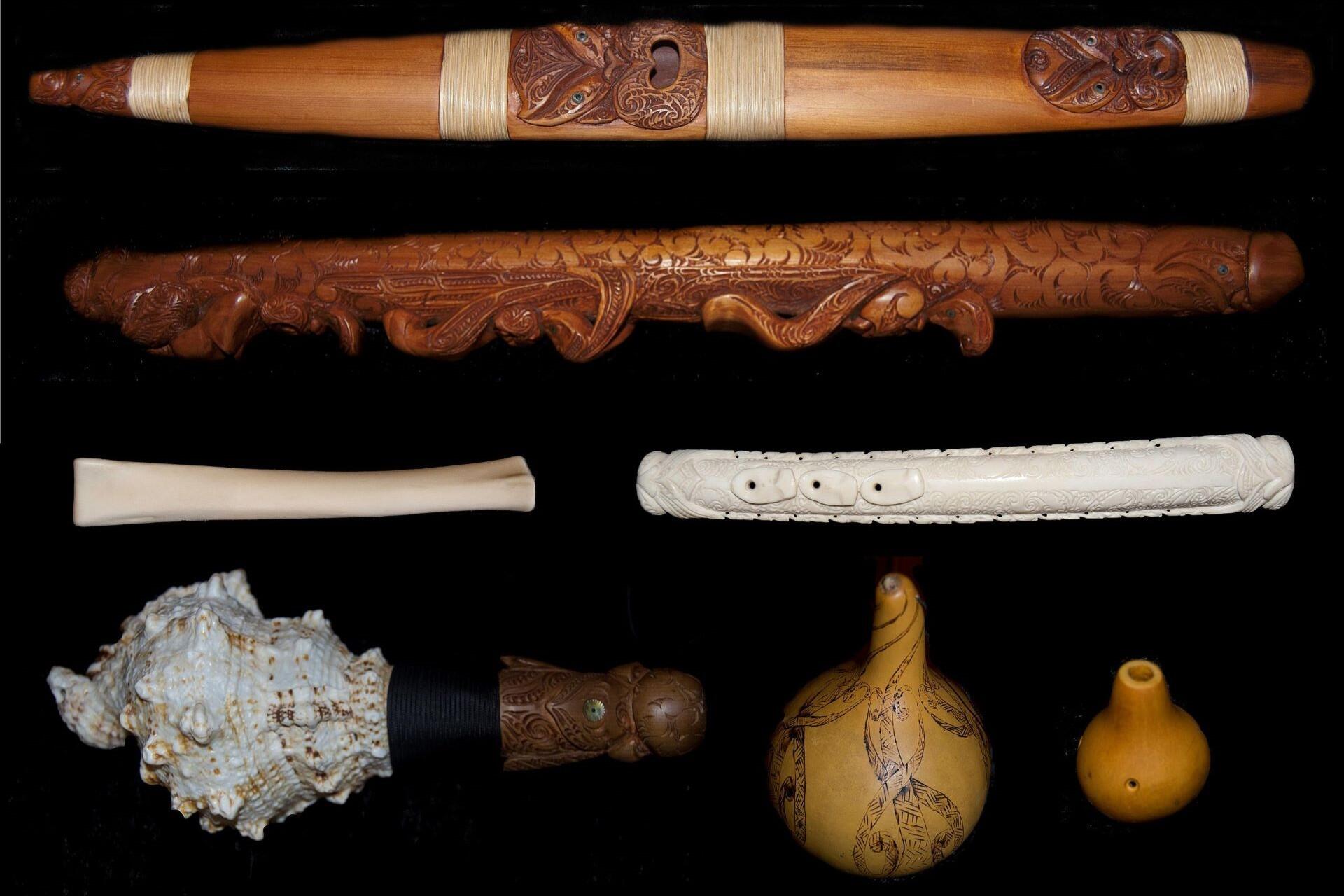Traditional Māori musical instruments, or taonga pūoro, are treasures that carry the spirit, stories, and wisdom of Māori ancestors. These instruments are typically crafted from natural materials like wood, bone, and shell.
These instruments produce unique sounds and are used in ceremonies, storytelling, and daily life. They tend to evoke the natural beauty of Aotearoa (New Zealand).
Here, we'll explore the heritage of taonga pūoro, including instruments like koauau (flute), pūtōrino (bugle/flute), and nguru (nose flute).

What Are Taonga Pūoro?
In te reo Māori, taonga pūoro means “musical treasures”. This just goes to show how deeply important these traditional instruments are.
Unlike other musical instruments, particularly Western ones, these are intrinsically tied to nature, each carrying a unique story, purpose, and connection to the natural world.
Materials and Craftsmanship
Taonga pūoro were traditionally crafted using natural materials like:
- Wood: Carved into flutes, trumpets, and other wind instruments.
- Bone: Often shaped into flutes, particularly using albatross or human bone for ceremonial purposes.
- Shell: Large conch shells were transformed into trumpets.
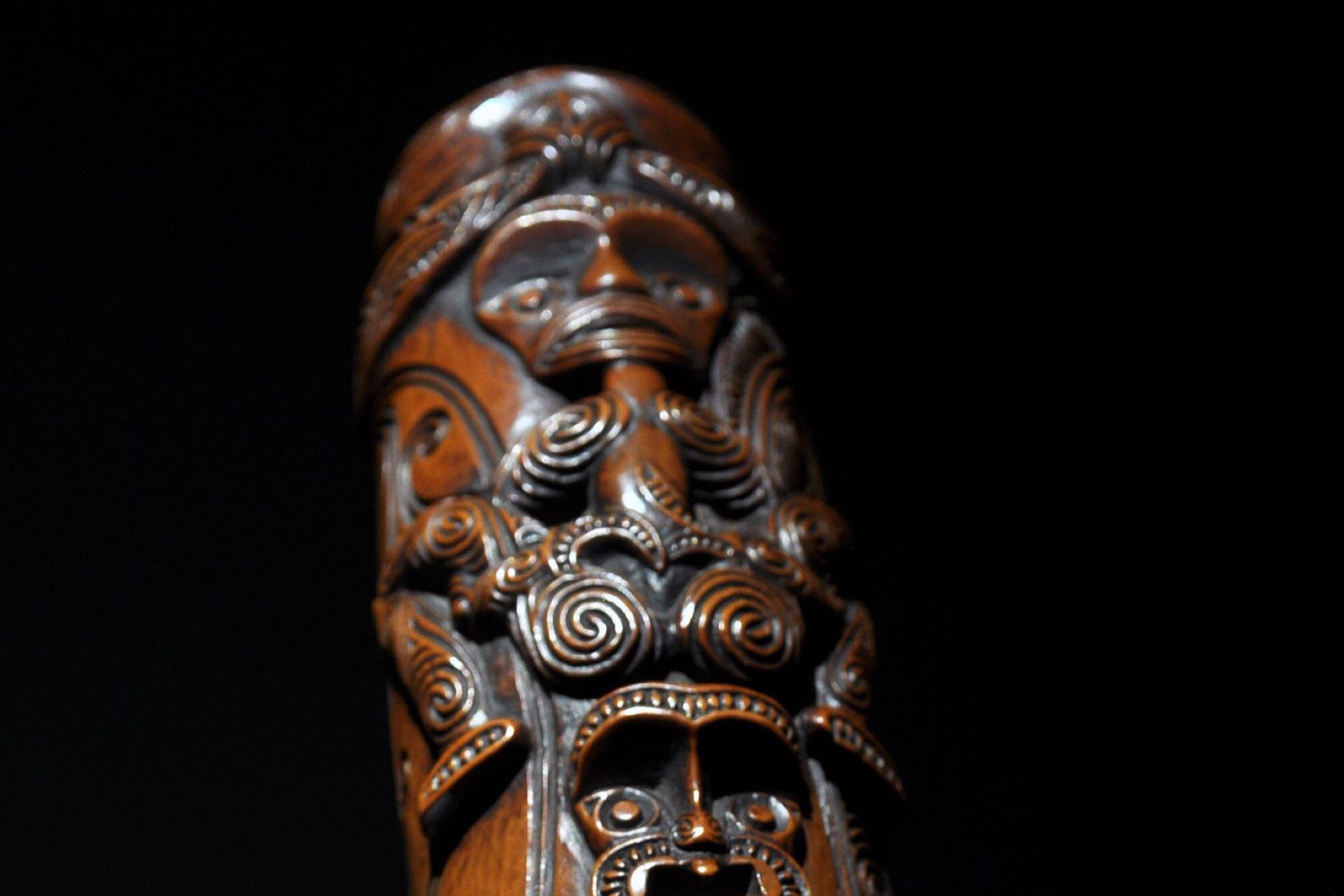
These instruments are meticulously carved and adorned with designs that represent tribal identity or carry spiritual meaning.
The crafting process itself is deeply sacred and it's common for karakia (prayers) to be recited to honour the materials and the instrument.
Spiritual and Cultural Roles
Taonga pūoro aren't just for entertainment, either. They're integral to parts of Māori life and could be used for:
- Ceremonies: Used to welcome guests, mark significant events or connect with spiritual realms.
- Storytelling: Instruments often accompanied oral traditions, enriching the narratives with evocative sounds.
- Healing: Some instruments, like the nguru, were believed to have calming properties, aiding in emotional or spiritual healing.
Taonga pūoro are more than instruments—they are sacred connections to the natural world and the ancestors who shaped Māori identity.
Koauau (Flute)
The kaouau is an iconic instrument. This is a small traditional flute made from wood, bone, or pounamu (greenstone). This is used in everyday and ceremonial settings for storytelling, healing, and personal expression.
The koauau has three finger holes and is around 10 to 20 centimetres long. In terms of sound, it mimics bird calls.
The koauau is more than a flute—it is a voice for storytelling, spirituality, and emotional connection.
The koauau is played by blowing across the top, similar to a Western flute. Musicians can create wonderfully intricate melodies by varying their breath and finger placement.
Pūtōrino (Bugle/Flute)
The pūtōrino is designed to mimic human voices and birdcalls. It is shaped like a cocoon and can be played as either a flute or a bugle. Its adaptability and craftsmanship make it one of the finest Māori instruments.
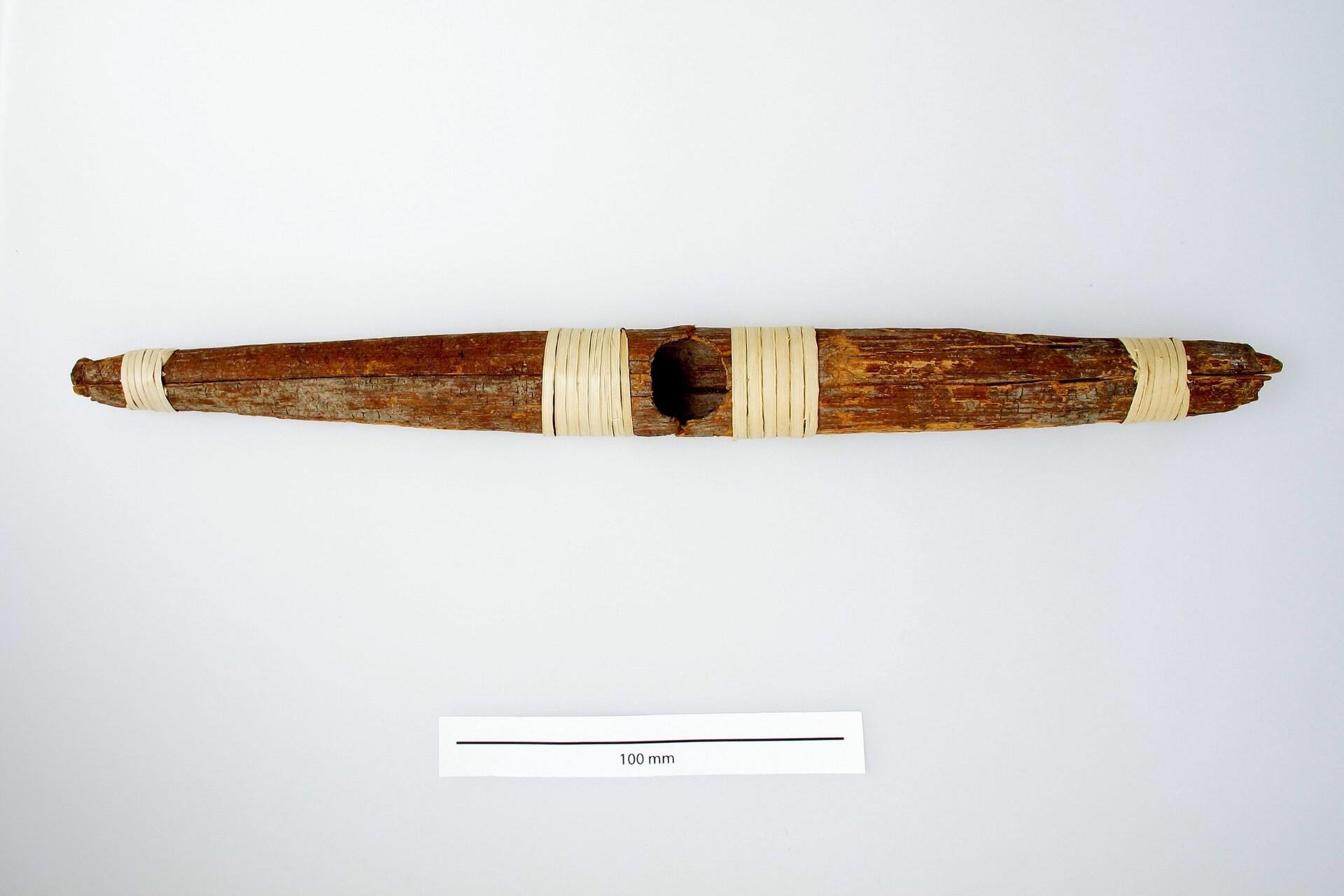
Generally, it's made from wood and has elaborate designs. These carvings often feature manaia (spiritual guardians) or pūmanawa (ancestral representations), reflecting their sacred purpose.
Its cocoon-like shape allows it to be played in one of two ways:
- Flute-style: Blown across the top to create melodic tones.
- Trumpet-style: Blown through one end for deeper, louder sounds.
This instrument requires a lot of skill and precision to play. It's capable of high-pitched melodies and deep, resonant tones. Many compare the sound to the call of the kōkako (a native bird).
The pūtōrino's dual voice symbolises the connection between the physical and spiritual worlds in Māori culture.

Nguru (Nose Flute)
The nguru is a small flute that's traditionally played using the nose. It's usually made from wood, stone, or bone.
- It has a curved shape, making it easy to hold and play.
- The instrument’s small size allows for precise control of airflow, creating smooth, melodic tones.
- Some nguru include small notches or holes to allow variations in pitch.
In Māori culture, the nguru symbolises peace and reflection and is used in various contexts:
- Lullabies: The nguru’s soft tones were traditionally used to soothe children or provide comfort during quiet moments. They're a great accompaniment to children's waiata.
- Healing: Its calming sound was believed to be therapeutic, aiding emotional and spiritual balance.
- Storytelling: The nguru accompanied narratives, adding a melodic layer that enhanced the listener’s connection to the story.
The nguru embodies the gentle spirit of Māori culture, offering a voice to moments of peace and introspection.
The nguru is special in how it's played, by blowing air through the nostrils. This results in a serene and smooth sound common for meditative or intimate settings.
Pūkaea (Trumpet)
The pūkaea is like a trumpet made from hollowed wood. It has a deep, resonant tone and is traditionally used for signalling and ceremonial purposes.
Made from a long piece of hollowed wood, the pūkaea, like many other Māori instruments, is often carved to indicate spiritual significance or tribal identity.
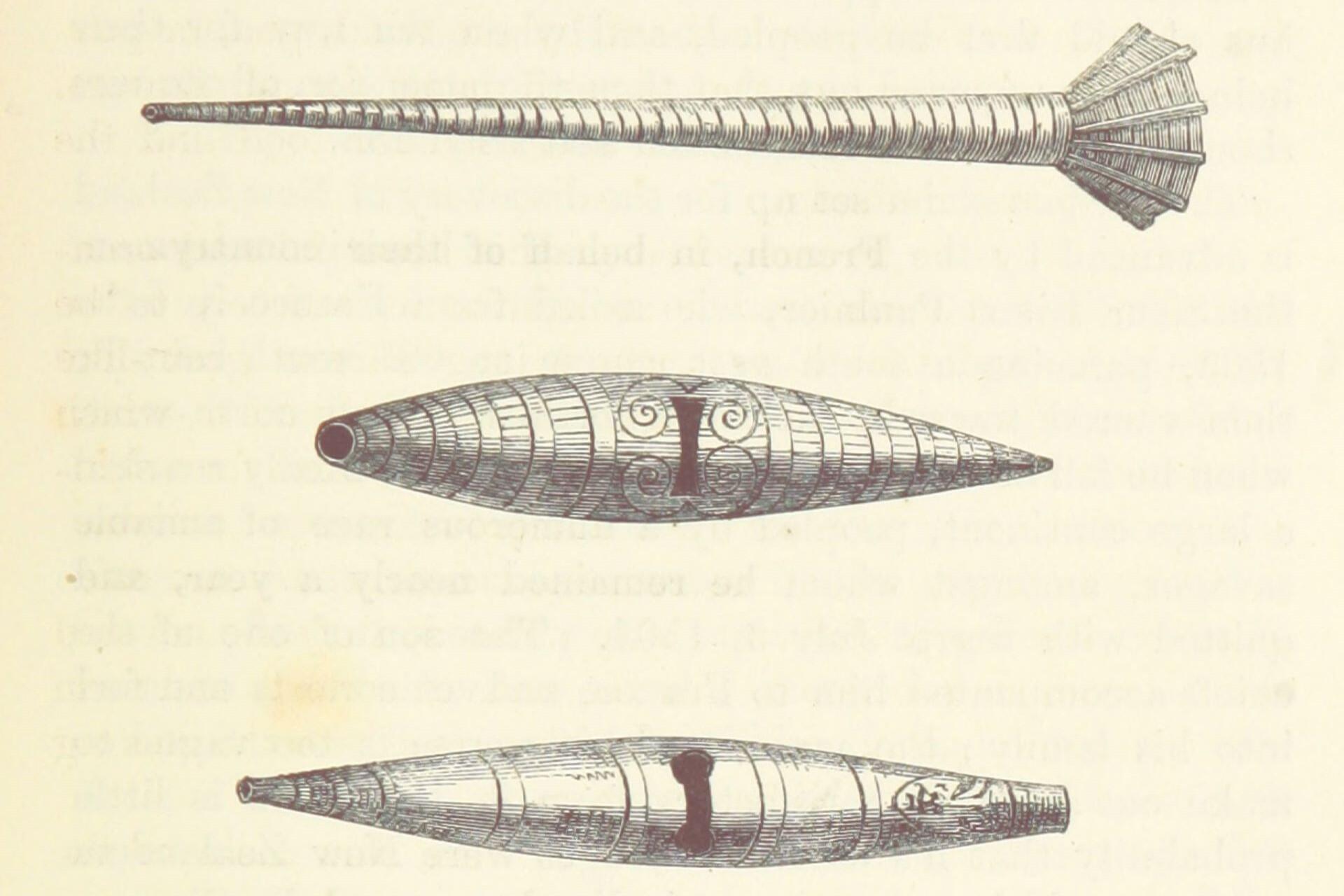
- Materials: Typically made from native woods like rimu or kauri, chosen for their acoustic qualities.
- Size: Ranges in length, with longer pūkaea producing deeper, more resonant tones.
- Carvings: Often include designs that honour ancestors or natural elements such as waves or mountains.
It's one of the more pragmatically functional instruments we've seen so far, being more useful in non-musical contexts rather than in waiata.
- Signalling: Used to announce the arrival of visitors, warn of impending danger, or call people to gatherings.
- Ceremonies: Played during rituals to invoke ancestral spirits or enhance the solemnity of the event.
- Warfare: Its sound could intimidate enemies or rally warriors to action.
The pūkaea’s powerful voice carries messages across distances, connecting people to each other and the spiritual realm.
The pūkaea is played by blowing into one end. The player's breath and lips control the pitch and tone, and sounds carry across long distances.
Pūrerehua (Bullroarer)
The pūrerehua or bullroarer is a traditional instrument that makes a humming or roaring sound when swung around. Its name is the Māori for "butterfly" and is commonly associated with spiritual communication and weather rituals.
It's usually made from wood or bone shaped into a flat oval and attached to a cord.
- Material: Made from lightweight wood for ease of spinning.
- Cord: Traditionally woven flax (muka) or modern materials like string.
- Size: Varies, but typically small enough to be swung easily.
The pūrerehua is often played in spiritual or environmental contexts:
- Weather Rituals: Played during ceremonies to summon rain or wind, its sound is believed to mimic natural elements.
- Spiritual Connection: Used to communicate with the atua (gods) or invoke ancestral guidance.
- Ceremonies: Incorporated into healing rituals or to ward off negative energies.
The pūrerehua is a powerful instrument that embodies the harmony between humans and nature in Māori traditions.
By swinging its cord in a circular motion, the pūrerehua makes a low-pitched oscillating sound. The speed of the spin and the length of the cord control the tone and volume.
Taonga Pūoro in Modern Times
Taonga pūoro are deeply rooted in Māori culture, but their significance and use have changed.
These instruments are still used by newer generations and audiences worldwide for everything from contemporary Māori musical performances to education and healing practices.
Revival of Taonga Pūoro
With cultural leaders like Hirini Melbourne and Richard Nunns, taonga pūoro has been rediscovered and revitalised.
The voices of these instruments are now being heard again, with efforts to:
- Reintroduce taonga pūoro into Māori communities and schools.
- Record the sounds and techniques of these instruments for future generations.
- Incorporate traditional instruments into contemporary music to celebrate Māori heritage.
Taonga Pūoro in Music and Art
If you want to hear taonga pūoro, they're prominently featured in:
- Contemporary Music: Māori artists like Maisey Rika, Ria Hall, and others incorporate traditional sounds into their compositions, blending the old and new.
- Film Scores: Taonga pūoro have been used in movies such as Whale Rider and The Lord of the Rings to evoke the spirit of Aotearoa.
- Art Installations: Modern exhibitions often include taonga pūoro as part of interactive displays to showcase their history and significance.
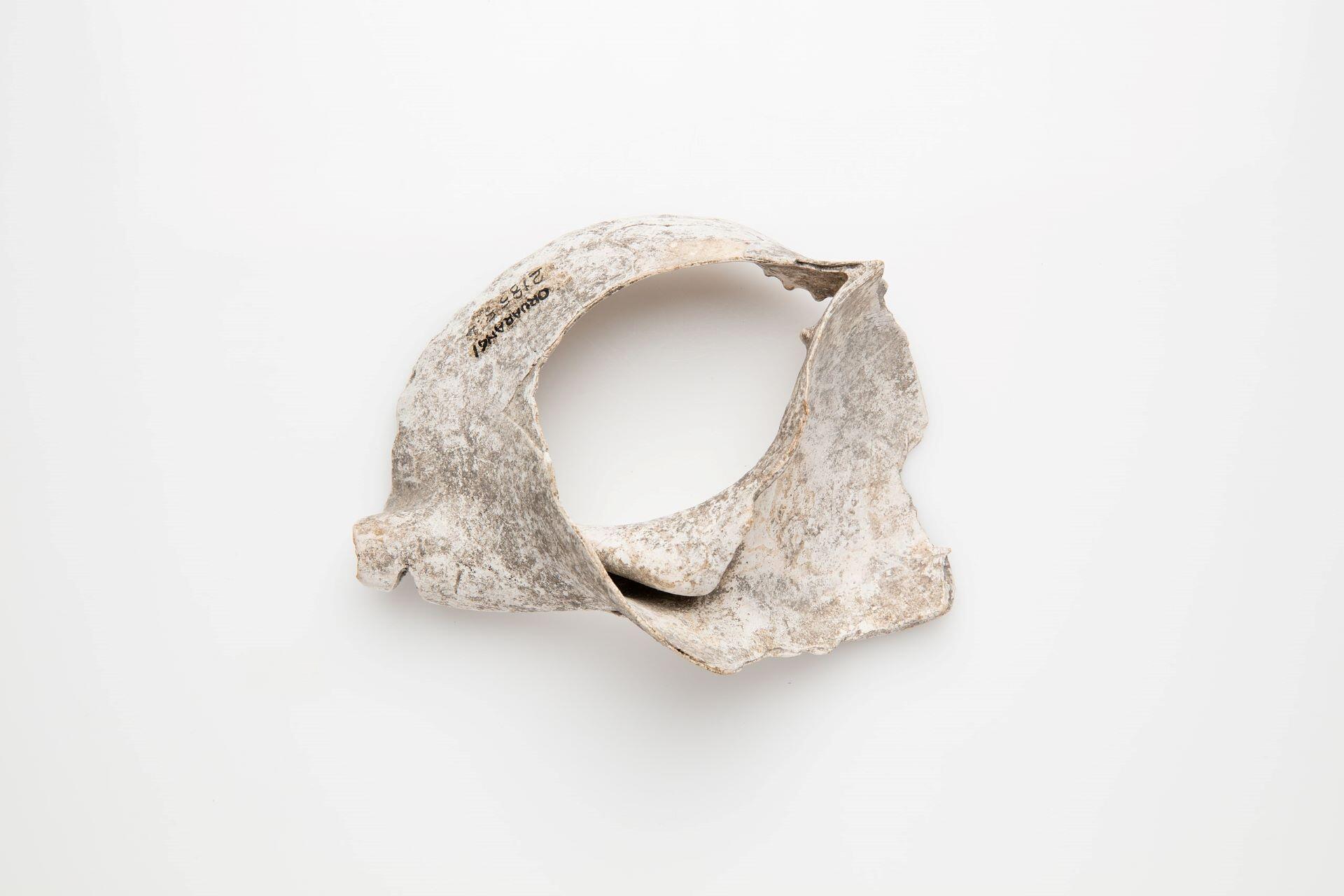
Education and Cultural Learning
In addition to their musicality, these instruments have also been embraced for teaching more about Māori culture, language, storytelling, and traditional values.
Workshops and musical performances are a great way for students to:
- Learn about the natural materials and crafting techniques behind these instruments.
- Explore the cultural meanings associated with their sounds.
- Participate in playing simple instruments like the koauau or pūrerehua or sing along to them with popular waiata.
Healing and Well-being
Taonga pūoro have also found their place in modern healing practices. In sound therapy and spiritual practices, they can be used to reduce stress, promote relaxation, or connect with nature.
In modern times, taonga pūoro continue to inspire creativity, foster cultural pride, and promote holistic well-being.

